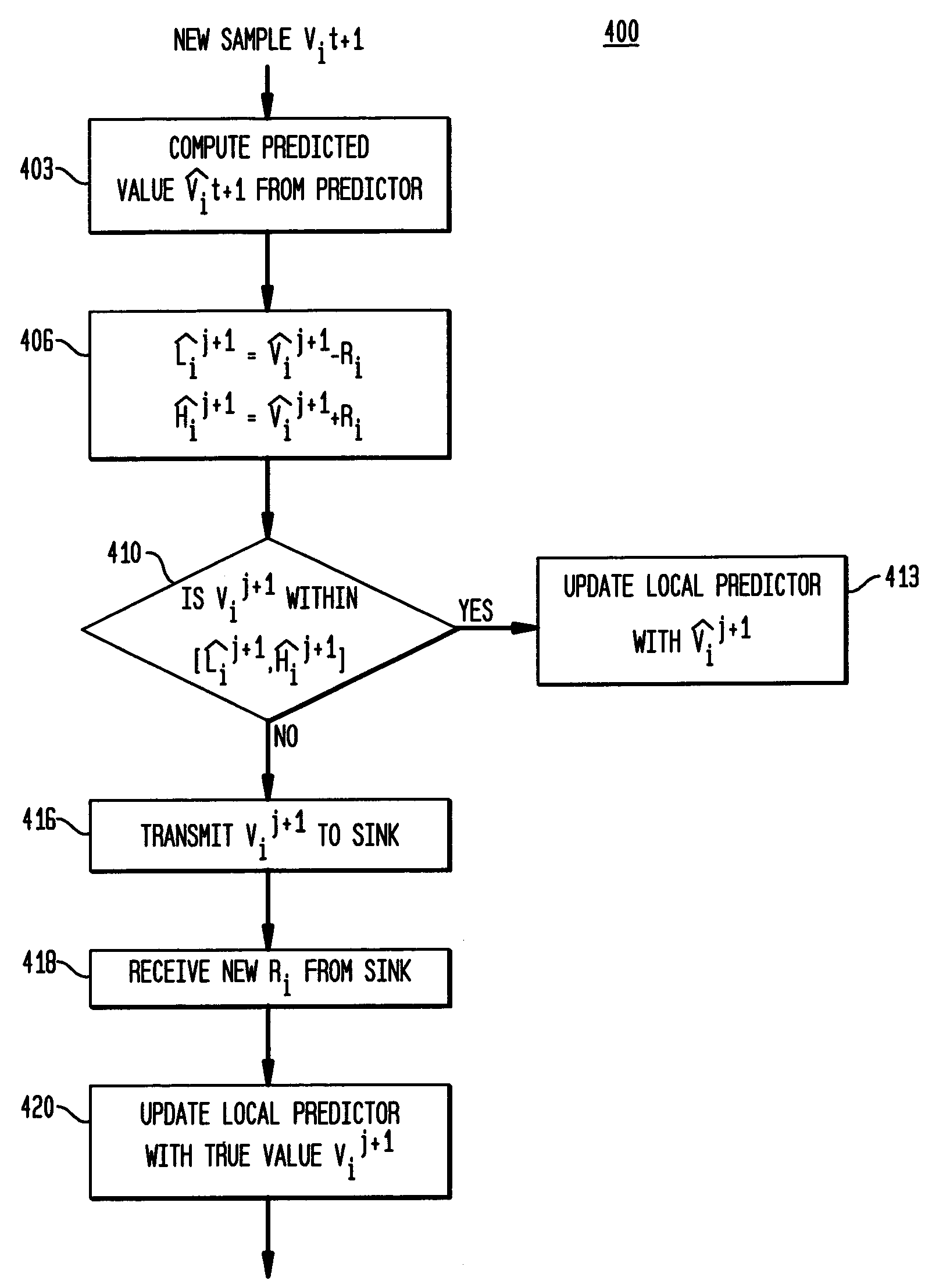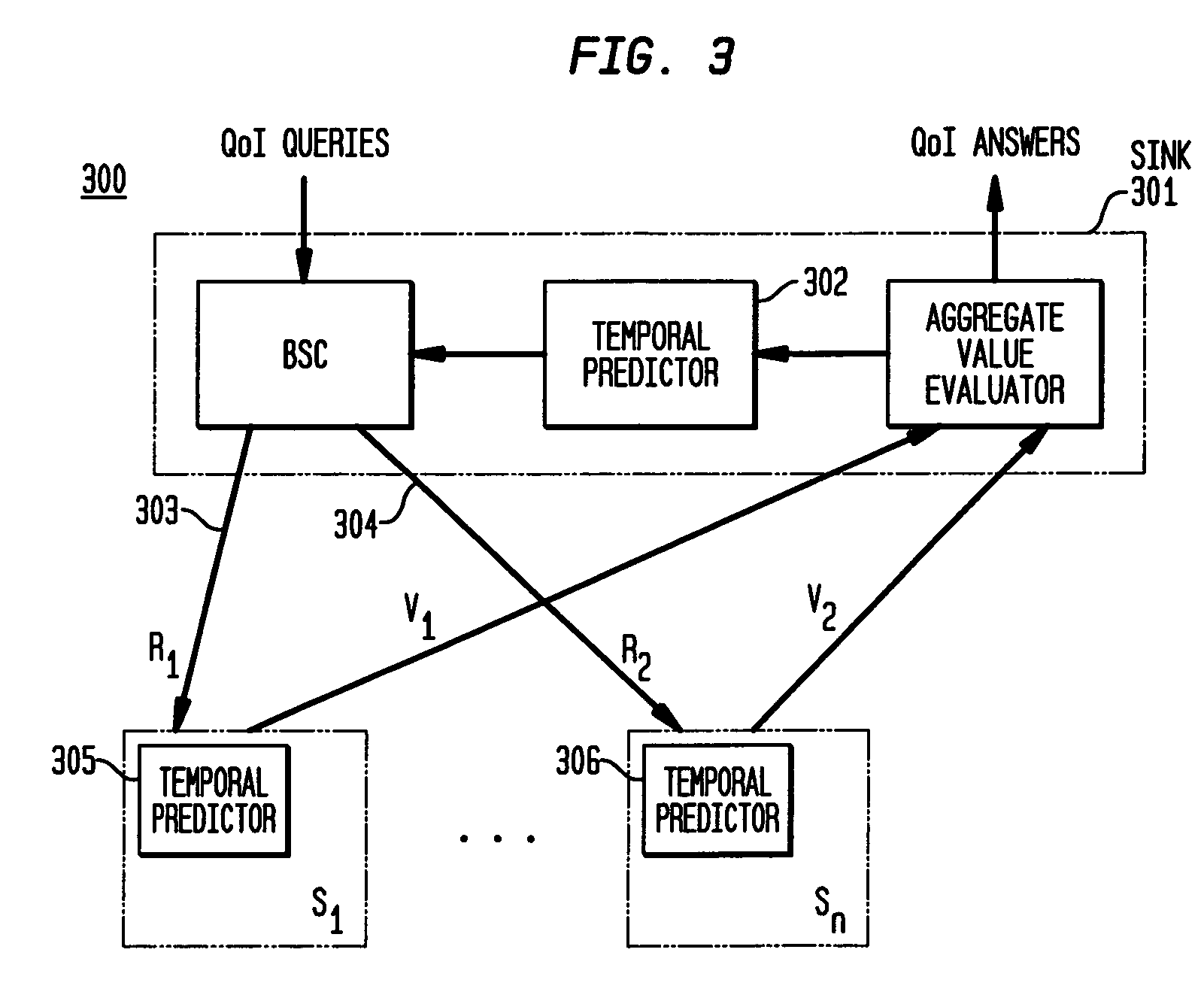System and method for efficient and collective adjustment of sensor reporting ranges for long-lived queries
a technology of long-lived queries and reporting ranges, applied in the field of information gathering, can solve problems such as unresolved problems, and achieve the effect of efficient orchestrating transmission
- Summary
- Abstract
- Description
- Claims
- Application Information
AI Technical Summary
Benefits of technology
Problems solved by technology
Method used
Image
Examples
first embodiment
[0034]In the invention as shown in FIG. 2, the computation of the differential bounds for each sensor is performed at the sink, or in general, any other node in the computing infrastructure, based on the stream of data samples received from the sensors. This computation is performed by a logical component called the Bounds Setting Component (BSC). As the data collection process is an event-driven paradigm, different sensors will report back to the sink at different time instants (only when their sampled value falls outside their current range). In general, whenever one of the set of sensors reports back on a new value, the BSC may need to re-compute the precision bounds for each of the individual sensors. This may be needed, even for those sensors with data samples that are still within their currently specified ranges. The computation of the modified ranges for each sensor depends on the specific type of query issued, i.e., on the specific QoI metric that is associated with the app...
second embodiment
[0053]Accordingly, in the second embodiment, the TPC at a sensor utilizes a sufficiently long history of the true past samples to continually adjust the predictor coefficients (e.g., using linear least-squares regression), which are then used to predict the next sample value
[0054]v^ij+1,
and then adjust the range (Lij,Hij) values
[0055](usingLij+1=v^ij+1-riandHij+1=v^ij+1+ri).
It is understood that the multi-step linear predictor uses the past predicted values
[0056]v^ij,
rather than the true samples vij (except when vij falls outside (|Lij,Hij|) to ensure consistency with the sink (which usually does not receive the intermediate samples vij).
[0057]FIG. 4 depicts a process 400 representing the behavior of the sensor implementing temporal prediction. As shown at a first step 403, a new sample value vij+1 is generated by a sensor and is input to the temporal predictor component of the sensor that computes a predicted value
[0058]v^ij+1.
Then, at next step 406, the following predicted l...
PUM
 Login to View More
Login to View More Abstract
Description
Claims
Application Information
 Login to View More
Login to View More - R&D
- Intellectual Property
- Life Sciences
- Materials
- Tech Scout
- Unparalleled Data Quality
- Higher Quality Content
- 60% Fewer Hallucinations
Browse by: Latest US Patents, China's latest patents, Technical Efficacy Thesaurus, Application Domain, Technology Topic, Popular Technical Reports.
© 2025 PatSnap. All rights reserved.Legal|Privacy policy|Modern Slavery Act Transparency Statement|Sitemap|About US| Contact US: help@patsnap.com



